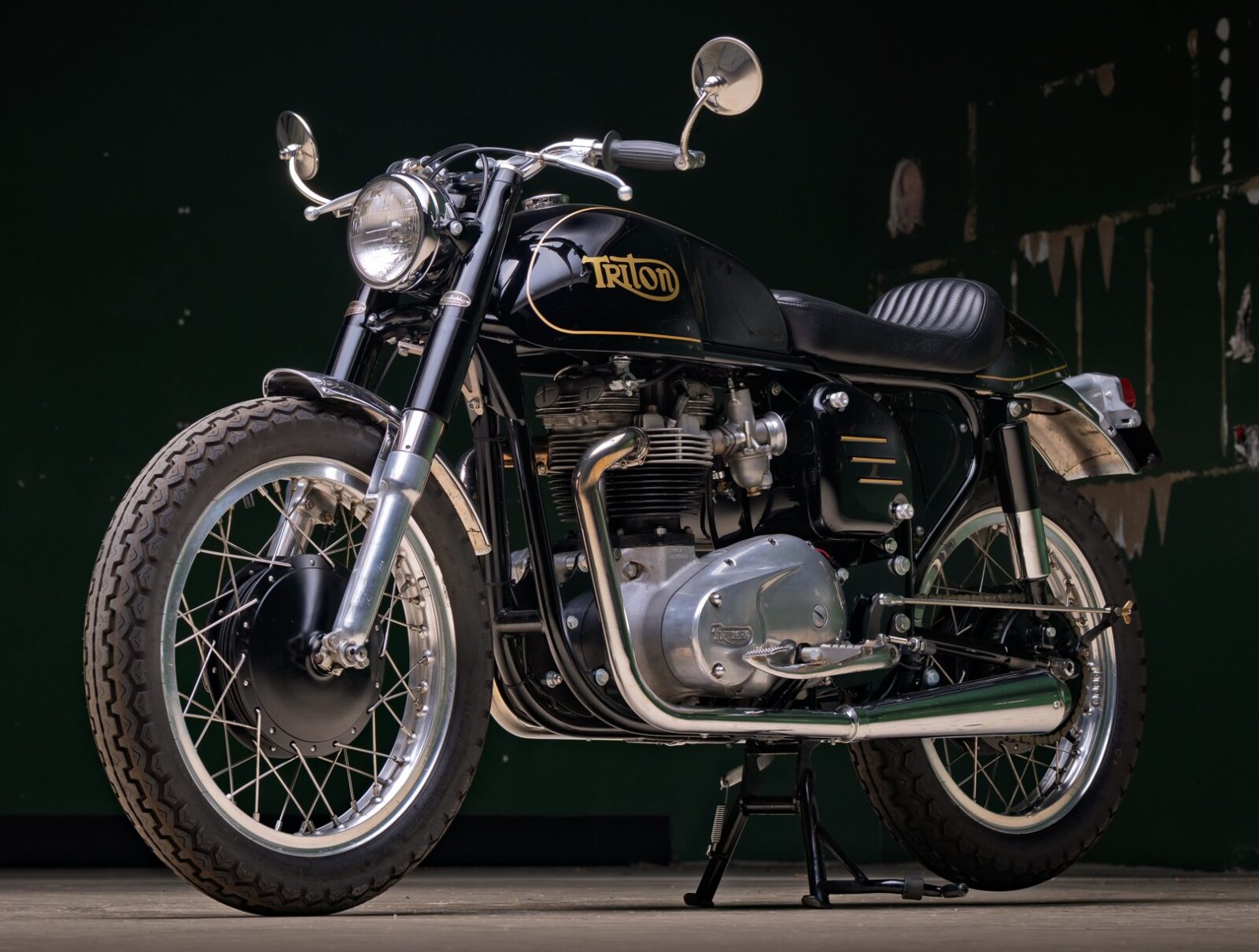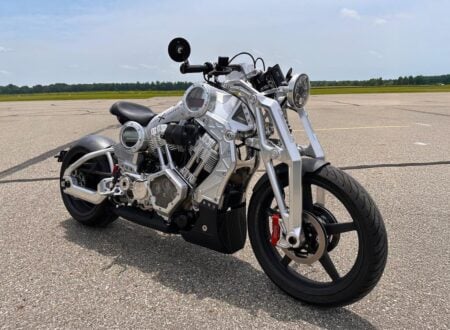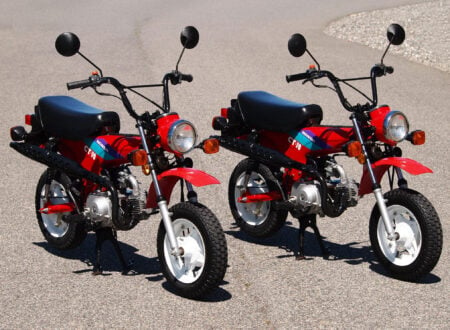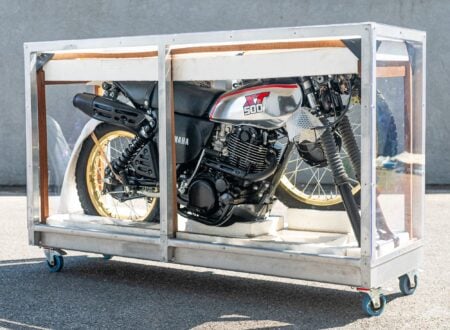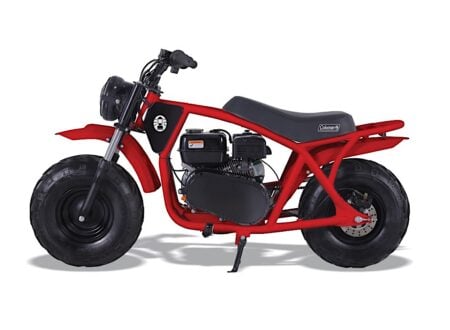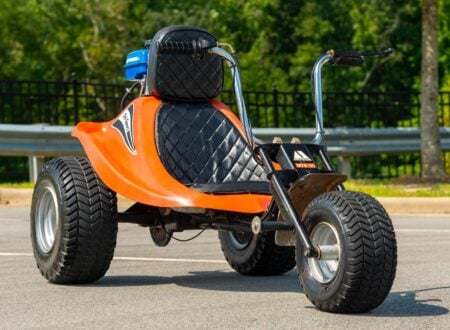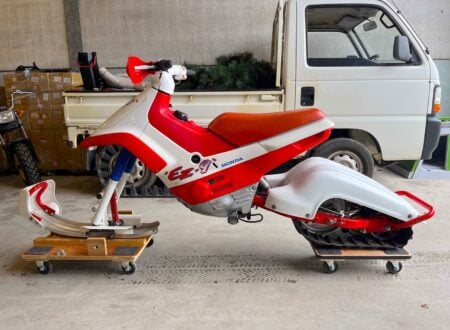This is a Triton, a type of custom motorcycle that combines a Triumph parallel twin engine with a Norton Featherbed frame – the name is a portmanteau of “Tri” from Triumph and “ton” from Norton.
No factory ever built Tritons, they were strictly homebuilt affairs that first started appearing in Britain in the late 1950s. They soon came to dominate the cafe racer scene that was exploding in popularity across the country, named after the Ace Cafe in London which was a ground zero for the phenomenon.
Fast Facts: A Triton Cafe Racer
- Triton motorcycles combine Triumph parallel-twin engines with Norton Featherbed frames, emerging in Britain in the late 1950s. Initially built by enthusiasts, often using parts from broken motorcycles, Tritons gained popularity in the cafe racer scene centered around London’s Ace Cafe, becoming symbols of the era.
- Specialist garages, notably Dresda Autos led by Dave Degens, played a significant role in popularizing Tritons by offering conversion kits and full custom builds. Degens notably boosted their fame by winning the 1965 Barcelona 24-hour endurance race aboard a Dresda Triton – greatly increasing demand and recognition among British motorcyclists.
- Despite their performance success at venues like Silverstone and Montjuic, Tritons faced some legal resistance from Norton – production slowed in the 1970s due to competition from Japanese motorcycles but they experienced renewed interest with the 1990s revival of classic British bike culture.
- Today, Tritons remain highly collectible, with original vintage models and contemporary recreations highly-prized for their classic design and legendary handling. The example shown in this article has a Norton Featherbed frame paired with a 1966 Triumph Bonneville parallel twin, modern electrics, classic aesthetics, and minimal styling.
History Speedrun: The Triton Motorcycle
In Greek mythology, Triton was a Greek god of the sea, and the son of Poseidon and Amphitrite. He was usually painted as a merman, with a human upper half and a fish lower, and he was typically described as being either “dreadful” or “mighty.”
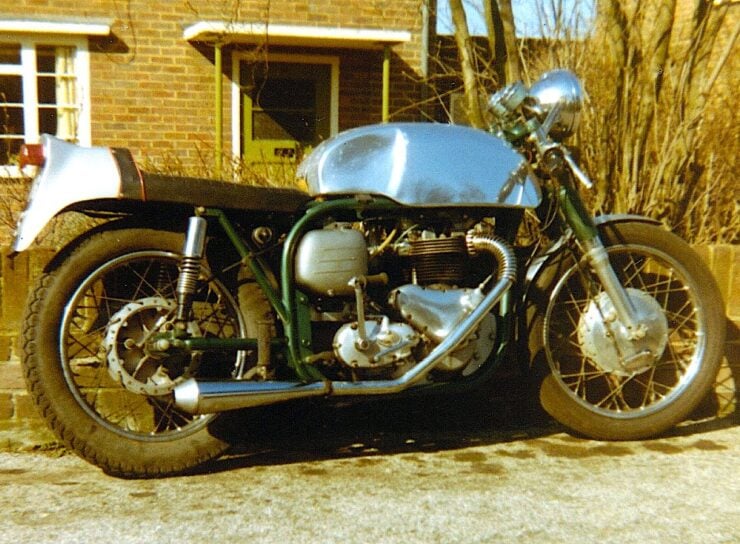

Even though the name Triton was chosen for this style of motorcycle without much in the way of influence from Greek mythology, the name does suit the bike – with purists frequently calling it “dreadful” and enthusiasts calling it “mighty.”
No one knows exactly who built the first Triton, we know that it must have appeared in the late 1950s, with the builder almost certainly choosing the Norton Featherbed frame for its excellent rigidity and handling, and the Triumph engine for its free-revving nature and excellent tuneability.
Early Tritons were typically home-assembled, made by tinkerers swapping bits from broken bikes. But as their reputation grew, specialist garages like London’s Dresda Autos, run by Dave Degens, began offering full conversion kits and complete builds.
Degens struck a chord when he raced a Dresda Triton in the 1965 Barcelona 24‑hour endurance event – and won. That success alone drove hundreds of orders, cementing the Triton’s status among performance‑oriented British bikers.
Tritons excelled beyond café runs. At circuits like Silverstone and Montjuic, they demonstrated their prowess, often outpacing D‑stock production bikes. Norton, however, was reportedly less than pleased with these hybrids – some builders even faced legal pushback.
The production of Tritons waned during the 1970s as Japanese motorcycles began to dominate the market. But the 1990s revival of classic British bikes revived interest in these hybrids.
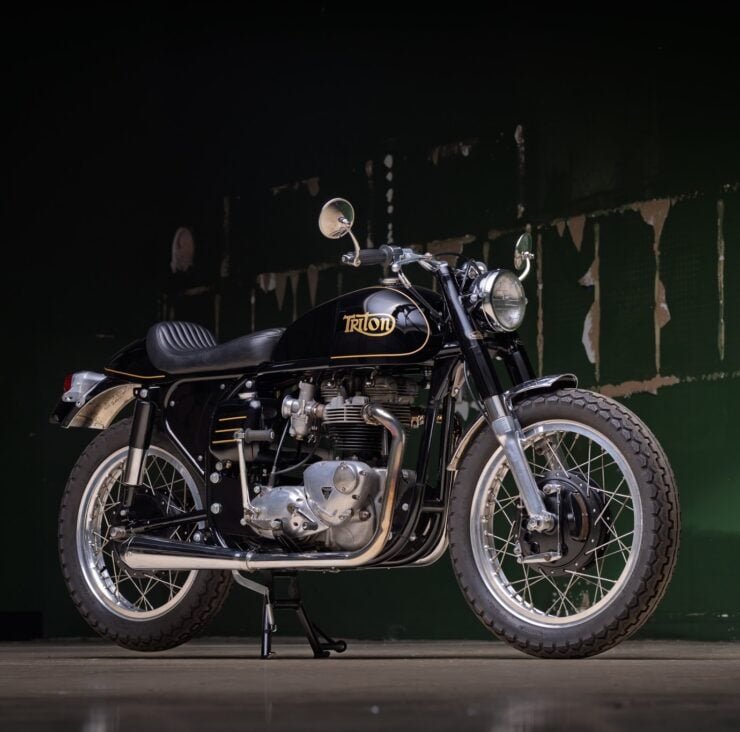

Today, Tritons remain prized by collectors and custom builders alike. Some are vintage originals; others are modern recreations, built in limited numbers by specialists and small workshops – each one a tribute to the pure, speed‑first philosophy that gave rise to their design.
The Triton Cafe Racer Shown Here
The Triton you see here is a modern cafe racer build, completed in 2020 on a modified Norton slimline Featherbed frame with a 1966 Triumph Bonneville 649cc parallel‑twin and four‑speed gearbox. It’s finished in black with gold pinstripes, it has stainless‑steel fenders, wire‑spoke Borrani wheels (19″ front/18″ rear) shod in Dunlop Roadmaster tires.
Upfront, you’ll find Norton Roadholder forks and a twin leading‑shoe drum brake, while the rear runs traditional dual shock absorbers and another small drum brake. It has a chrome dual exhaust, twin Amal carburetors, and the electrics are modernized with a VAPE ignition, Wassell stator, and Podtronic regulator/rectifier.
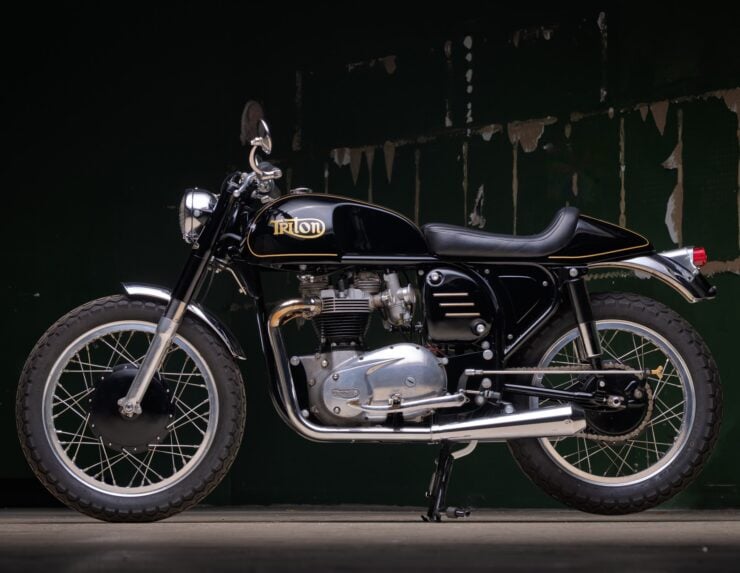

It has a classic headlight bucket and handlebar‑mounted switches as well as bar‑end mirrors. The cockpit is sparse – no instrumentation at all, just a solo contoured seat and a streamlined rear cowl. A center stand is included, and the wiring lacks a keyed switch – ignition is simply an on/off switch.
It’s now being offered for sale on Bring a Trailer out of Scottsdale, Arizona with a clean Colorado title listing the bike as a 1966 Triumph Bonneville. If you’d like to read more about it or place a bid you can visit the listing here.
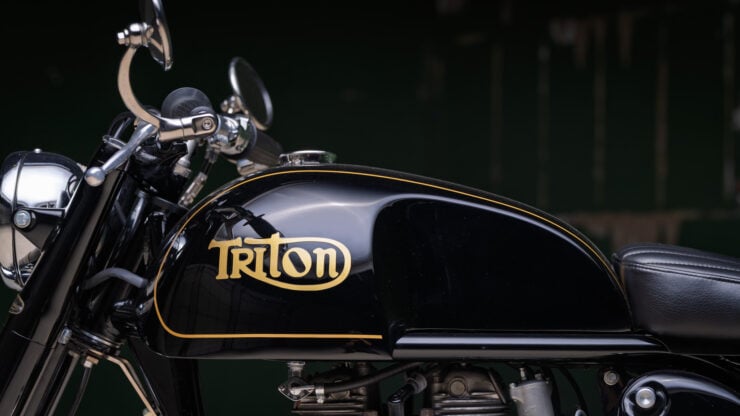
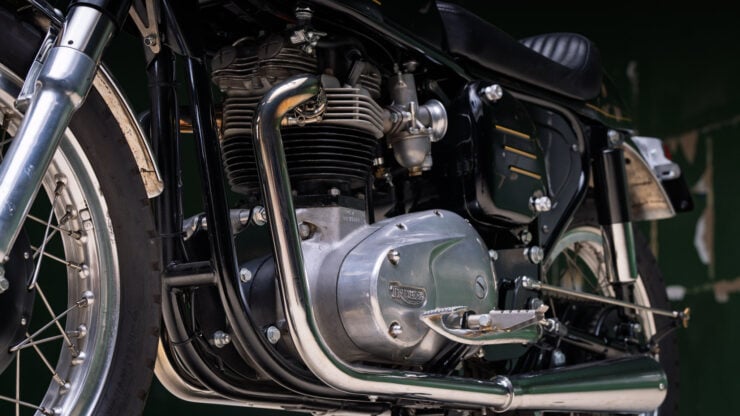
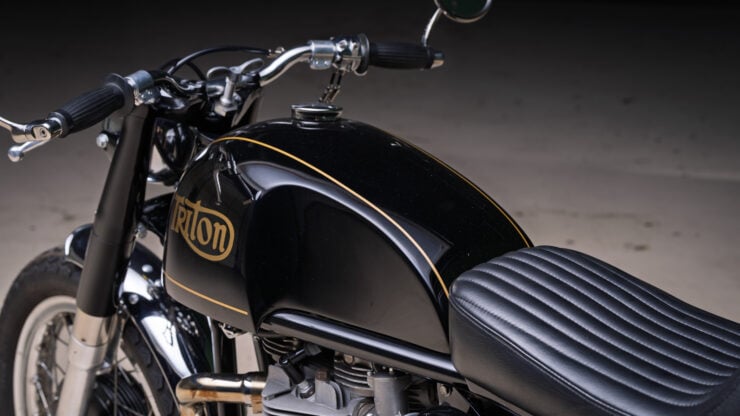
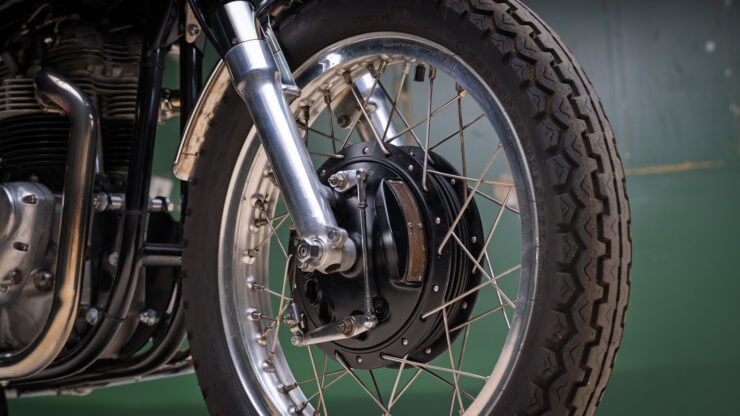

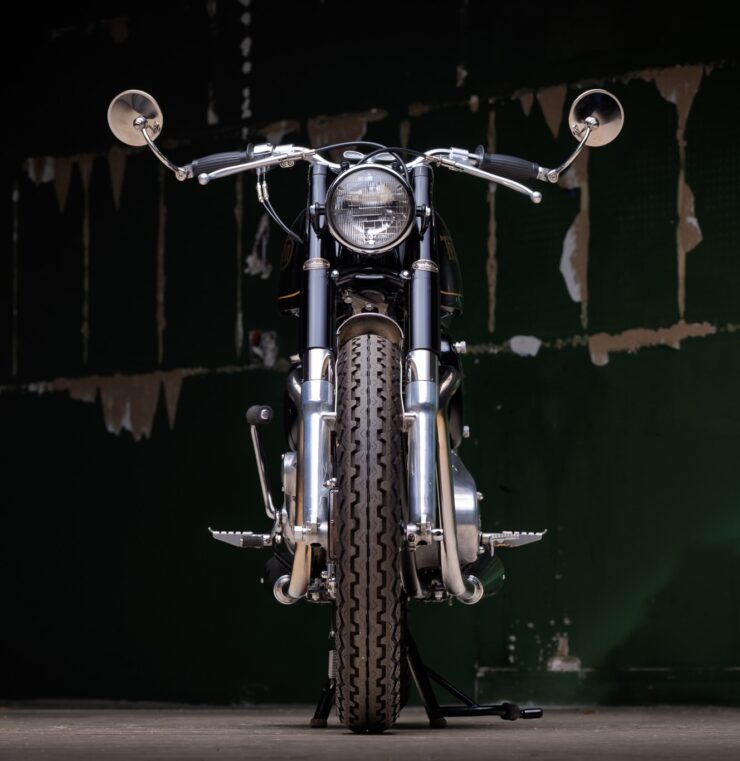
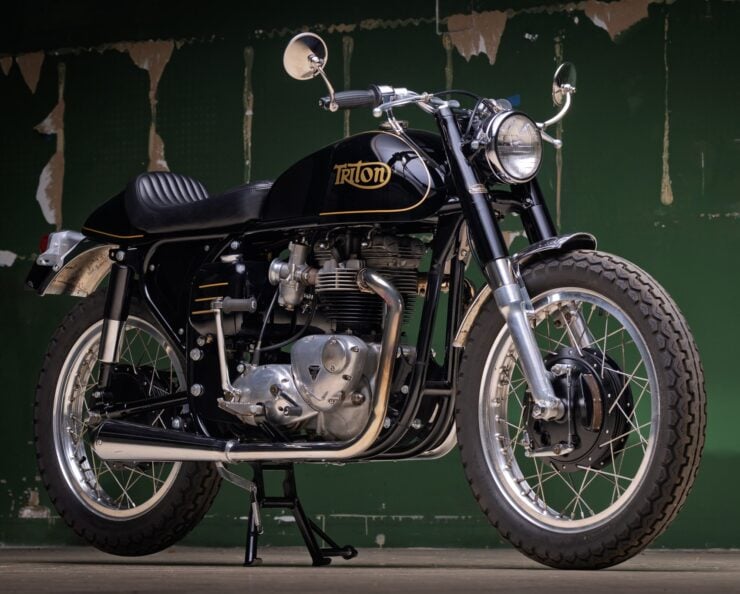
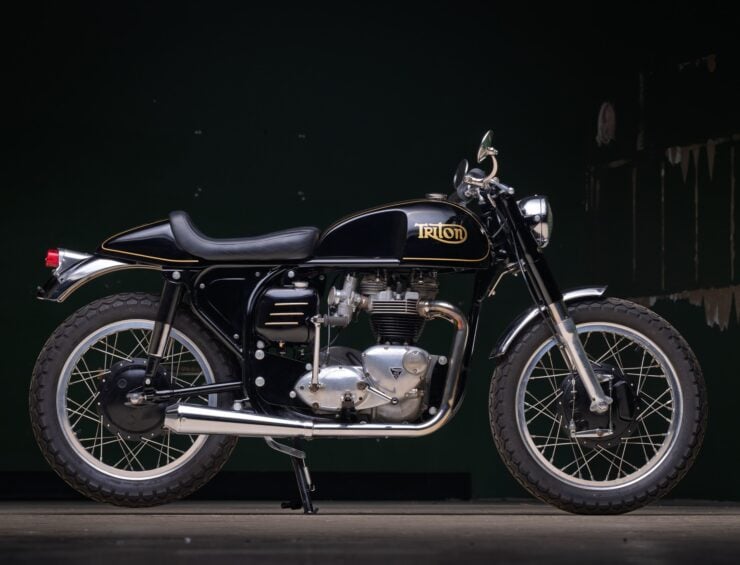
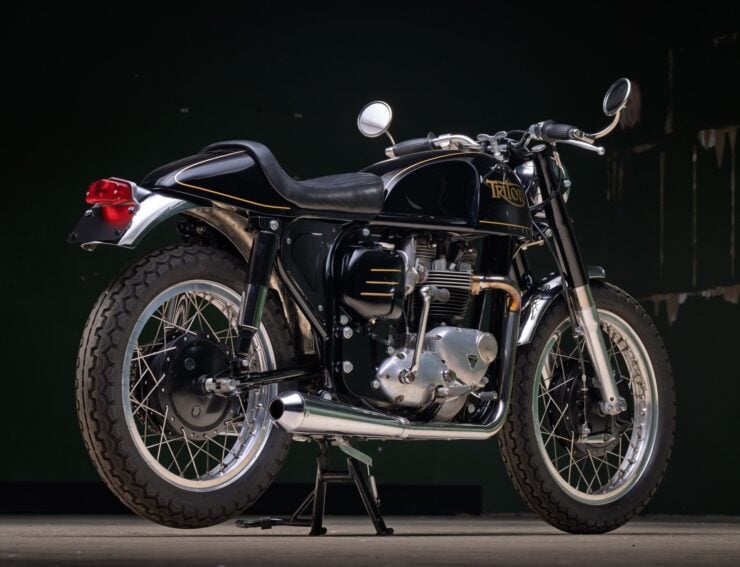
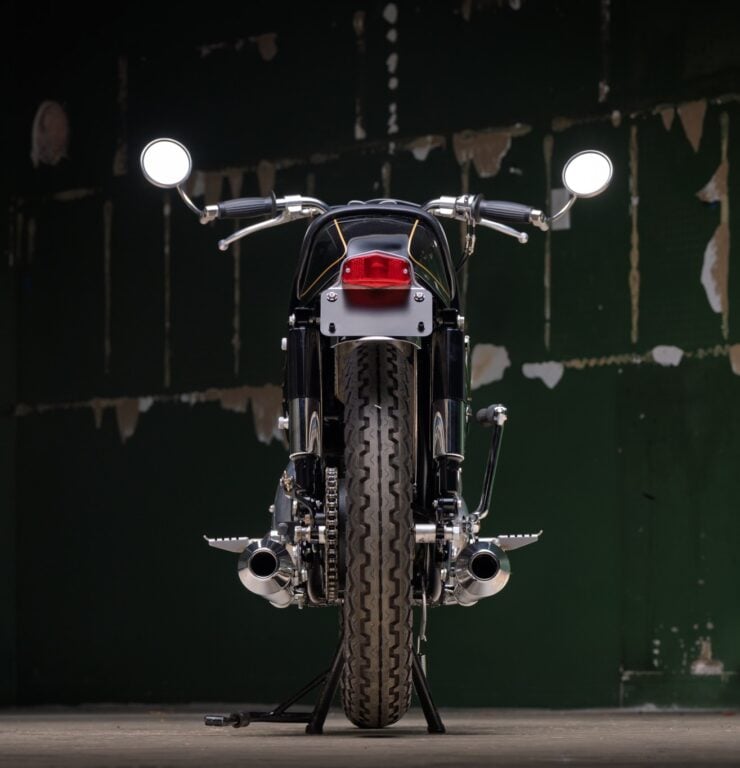
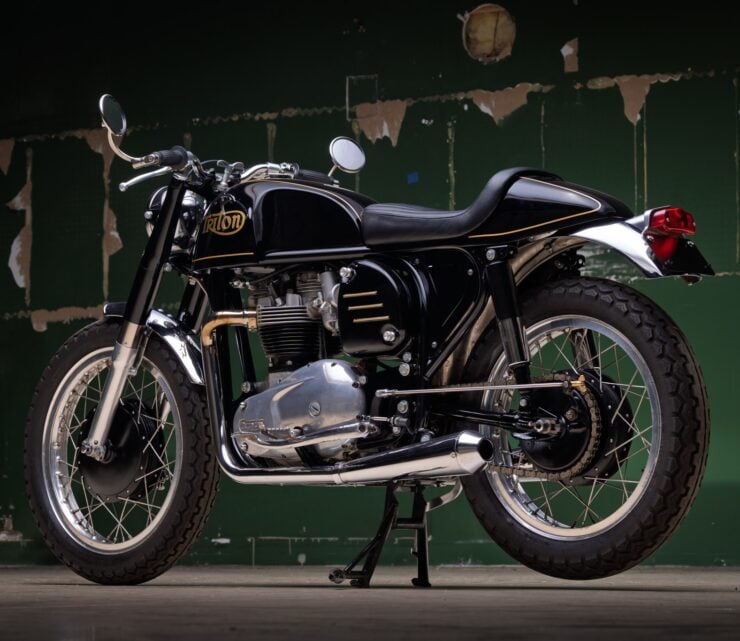
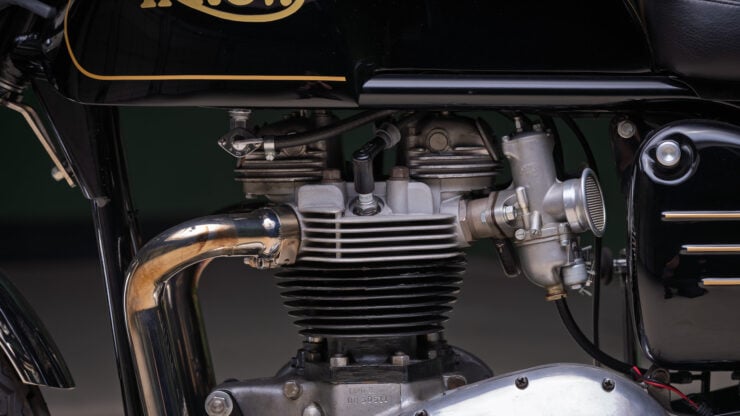
Images courtesy of Bring a Trailer

